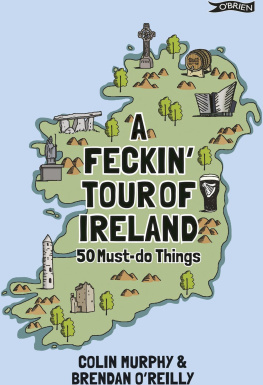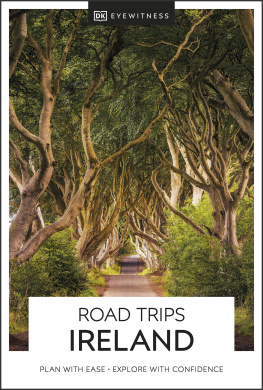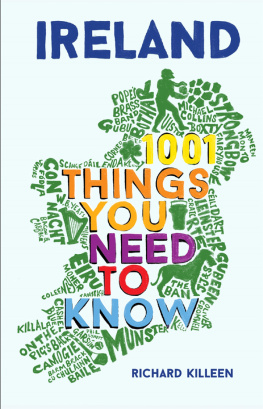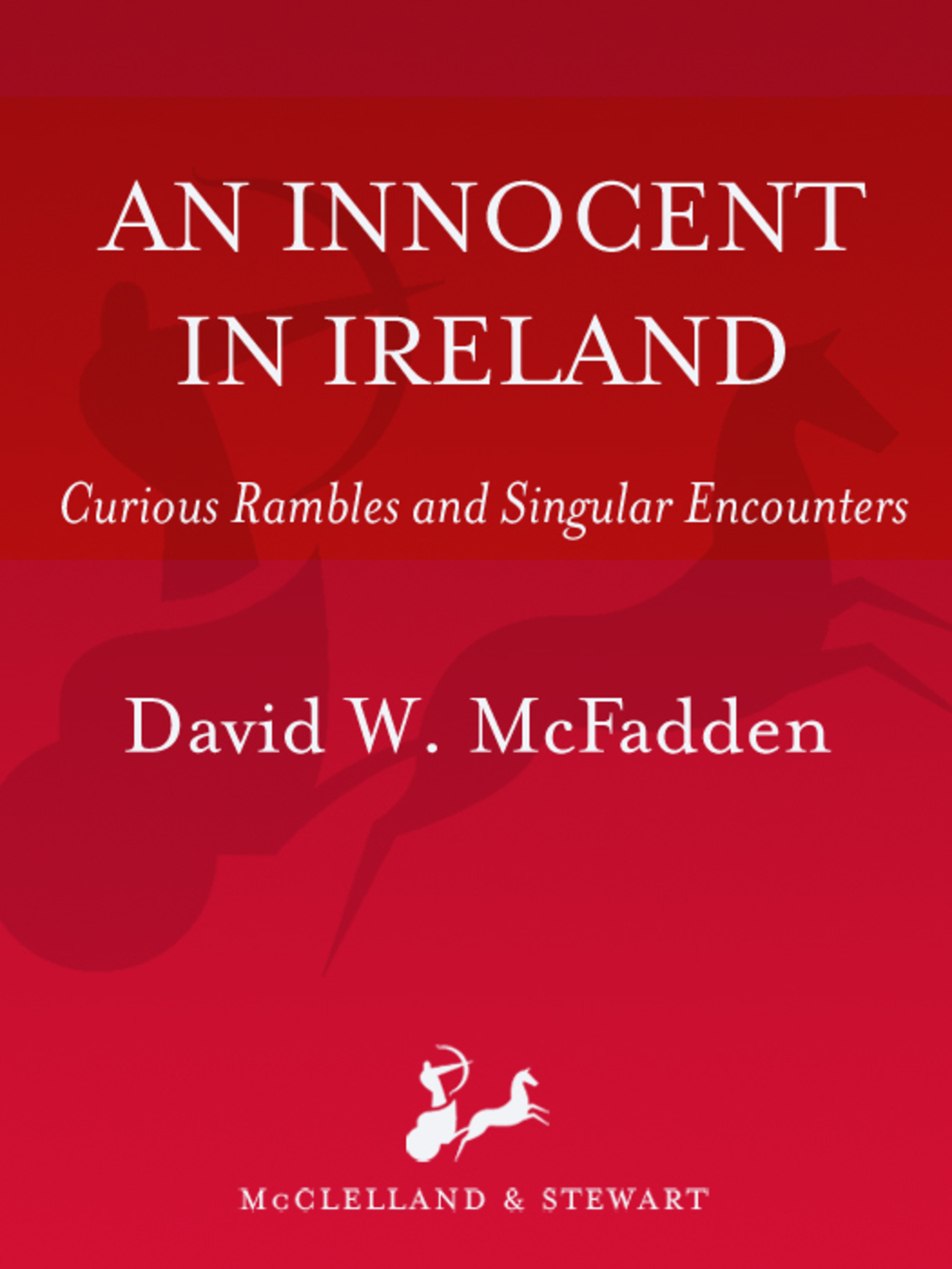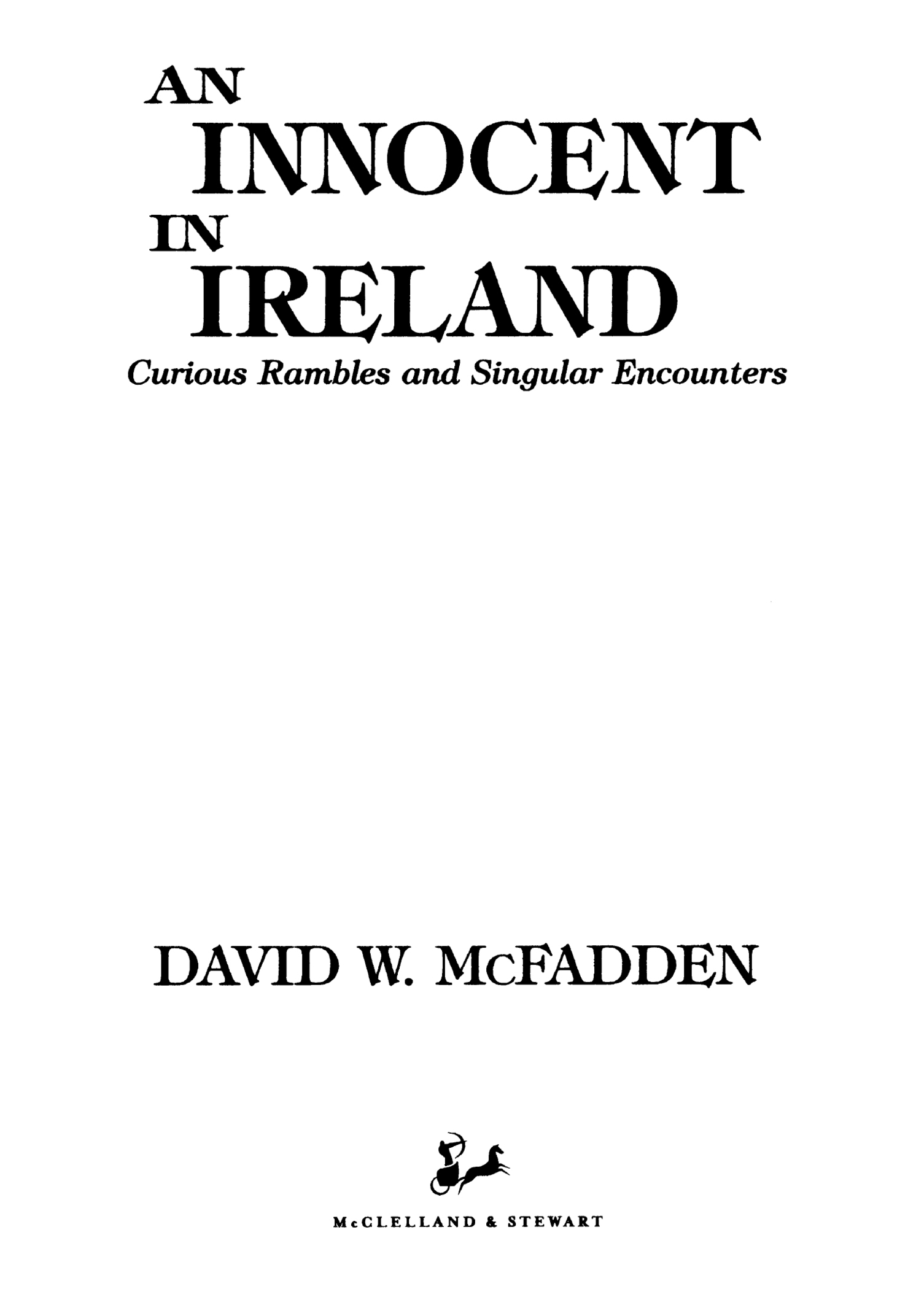ALSO BY DAVID MCFADDEN
POETRY
Intense Pleasure, 1972
A Knight in Dried Plums, 1975
The Poets Progress, 1977
On the Road Again, 1978
My Body Was Eaten by Dogs, 1981
The Art of Darkness, 1984
Gypsy Guitar, 1987
Anonymity Suite, 1992
The Death of Greg Curnoe, 1995
Therell Be Another, 1995
Five Star Planet, 2002
Cow Swims Lake Ontario, 2003
FICTION
The Great Canadian Sonnet, 1975, 2002
Animal Spirits, 1983
Canadian Sunset, 1986
NON-FICTION
A Trip Around Lake Erie, 1981
A Trip Around Lake Huron, 1981
A Trip Around Lake Ontario, 1988
An Innocent in Ireland, 1995
Great Lakes Suite, 1997
An Innocent in Scotland, 1999
An Innocent in Newfoundland, 2003
Copyright 1995 by David W. McFadden
Paperback edition published 1995
Electronic edition published 2016
McClelland & Stewart and colophon are registered trademarks of McClelland & Stewart
All rights reserved. The use of any part of this publication reproduced, transmitted in any form or by any means, electronic, mechanical, photocopying, recording, or otherwise, or stored in a retrieval system, without the prior written consent of the publisheror, in case of photocopying or other reprographic copying, a licence from the Canadian Copyright Licensing Agencyis an infringement of the copyright law.
Library and Archives Canada Cataloguing in Publication is available upon request
Library of Congress Control Number is available upon request
ISBN9780771055270
Ebook ISBN9780771061387
McClelland & Stewart,
a division of Penguin Random House Canada Limited,
a Penguin Random House Company
www.penguinrandomhouse.ca
v4.1
a
for my daughters
In Ireland it happens sometimes that the insane are taken to be saints of a kind. Legends in Ireland are born almost every day.
William Trevor
CONTENTS
PREFACE
This book is intended to be a work of non-fiction, yet a certain amount of fictionalization was unavoidable. For instance, in order to prevent the slightest possibility of embarrassment, some characters have had their names changed. In other cases, circumstances and locales have been altered. In some cases, one real-life character has been divided into two literary characters, and in other cases two real-life characters have been combined into one. In a few instances characters had to be invented.
Essentially, however, this book remains a work of non-fiction and is faithful to the spirit of Ireland as it presented itself. Indeed, the author immodestly recommends this book for anyone planning or dreaming of a trip to this enchanted, complex, and poorly understood island.
Thanks are extended to the many people who engaged me in so many strange, poetical, comical, tragical, delightful, and illuminating conversations, little suspecting, and, I trust, little caring, that these conversations would wind up in a book. As is my custom, I told no one on this trip that I was a writer, nor that I was planning a book on Ireland. In fact, although I couldnt resist taking copious notes each night, I still hadnt formed any real intent to write a book. Such an intent didnt form until after my return to Canada.
Thanks are also due to friends who read the manuscript, and to the Ontario Arts Councils Works-in-Progress program for financial support for the task of transforming my notes into a book that, I hope, could, without blushing, sit on the same shelf alongside H. V. Mortons trail-blazing In Search of Ireland.


CHAPTER 1
IN SEARCH OF MORTON
T he commuter train continued south over the Liffey and past Tara Street, Pearse Station, Lansdowne Road (location of the rugby stadium), Sandymount, Dalkey (near the Martello tower featured in the first chapter of Ulysses and now a James Joyce museum), and offered melancholy views out over the murderous innocence of the sea (Yeats) and the great sweet mother of the snotgreen sea, empty save for the smokeplume of the mailboat vague on the bright skyline (Joyce). It continued out over the formerly prosperous and still-handsome Anglo-Irish suburbs, spreading along the coastal plain and up to the feet of the lavender Dublin Mountains.
But I was tired after an overnight flight from Canada, and kept jetlagging off. Eventually I was awakened by a polite and serious eight-year-old in a grammar-school uniform. Strapped to his back was an oversize leather book-bag.
Excuse me, sir, he said, softly, but this is the last stop.
The child stood before me at solemn attention. When he was certain I was awake, he turned and scurried off.
In Toronto, where I usually hang out, this would never have happened. Id have been left to sleep it off, Id have had my bag stolen, or Id have been punched on the shoulder by a transit employee.
But this was Dublin, another world.
Cultural homogeneity was still not universal, though it had certainly progressed since J. B. Priestley wrote his novel The Good Companions, in which Messrs. Oakroyd and Oglethorpe come to the conclusion, after a lengthy debate, that people and places are as different as chalk is from cheese.
Coincidentally, The Good Companions was published in 1929, one year before H. V. Mortons In Search of Ireland, which I was intending to use as a guide of sorts on this trip.
We had In Search of Ireland in our house when I was a kid and I read it several times. Morton was a nice man, people responded well to him, and, if they hadnt, he wouldnt have noticed. He was a well-wisher, an optimist, a Pollyanna, a rank sentimentalist, a gladhander, a promoter of peace and goodwill, a schmoozer, and he always seemed to be on the lookout for a free meal. He was funnier than he realized. He was a certifiable Everyman.
I imagined him with a gap between his two front teeth, and wearing a tweed three-piece suit and a bowler hat splotched with bird droppings. If I were to run away to Ireland, Id be surrounded by happy Irish people holding hands and dancing and singing. Mortons Irish were eminently lovable, but a somewhat dark and devilish people who were not to be taken seriously and not to be given undue responsibility. They had a tendency to be bibulous, lazy, tribal, superstitious, irrational, a bit primitive, and fierce if unduly annoyed.


